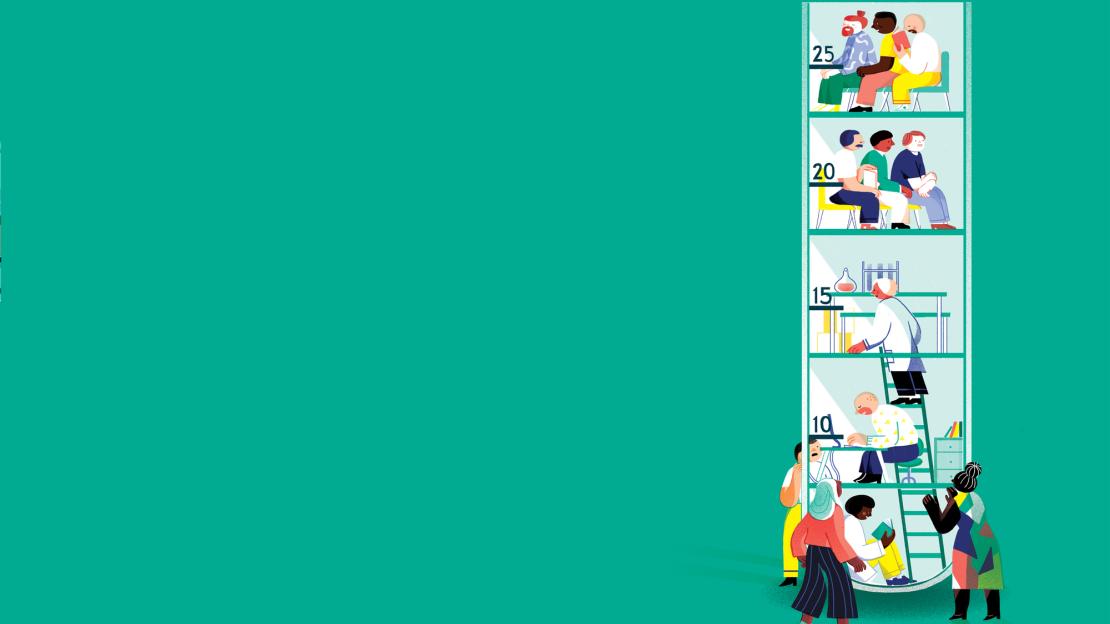We all have bias. We can’t avoid it — it stems from our values, how we see the world and how we interpret information.
While most of us assume that scientific research is supposed to be objective because it deals with data, it’s impossible for anyone, including researchers, to be completely objective.
Maydianne Andrade, U of T Scarborough’s vice-dean faculty affairs & equity, is a research professor in ecology and evolutionary biology. Historically, her field was rife with gender bias from men.
“Pretty much because they just didn’t think females had enough agency or intellect or cognition to actually drive the process,” she explains. “If you’re living in a society [that thinks] women don’t have brains and don’t have cognition that’s the same as men’s, then how do you work out a set of experiments that treat men and women the same?”
Times have changed, of course, but the problem persists. And when research is seen through this lens so early in the process, the work is loaded with bias before the first finding is even reported.
For example, artificial intelligence is created by people with their own perceptions, prejudices and preferences. So the same gender and racial stereotypes that we deal with in the real world are sneaking into artificial beings.
And consider heart disease research. According the the Heart and Stroke Foundation, heart disease is the second leading cause of death in Canadians, and the number one cause of death in Canadian women over 55. But most of what we know about it, and most of the medical profession’s approach to it, comes from research done on middle-aged men. Thanks to gender bias, there is much less knowledge about how the disease affects women differently, such as the onset age.
It is more than just unfair. It can have life or death impact.
“It’s about how bias manifests itself,” says Connie Guberman, associate professor, teaching stream, women’s and gender studies. One way, she says, “is by rendering invisible — you just ignore facts.” Another way: “how facts are interpreted.” And another: “you don’t gather the information because it’s not considered important.”
We tend not to think of ourselves as biased. Or, perhaps more likely, we like to think we’re able to work around the biases we hold. But it’s not as easy as we want to believe. People who have taken self-evaluations such as Harvard’s Implicit Association Test have been surprised to discover biases they didn’t realize they had.
It’s here that the conversation turns to unconscious bias — something Andrade has made it a priority to address. One approach is to make a concerted effort to attract researchers from diverse backgrounds. If you have researchers who represent all Canadians, she says, you will get research that serves all Canadians.
"We identify in a multiplicity of ways — as racialized women, as queer women, as Indigenous women. We are not just women.” – Connie Guberman
This year, the office of U of T’s vice-principal research made an open call for anyone who identified in an employment equity group to self-nominate for a Canada Research Chair, giving more opportunities for women to be considered. Says Andrade: “You would identify as a woman, and maybe a woman with intersectional identity — Indigenous women, for example — and then put forward your record and say, ‘here’s why I think I deserve a CRC.’”
In September 2018, the federal Ministry of Science and Sport announced that women accounted for 43 per cent of CRC submissions — an all-time high.
Andrade and Guberman both emphasize that we can’t simply focus on gender when countering bias, but on all the intersecting identities that make up the person. “If there is anything we’ve learned, it’s that gender is not the only primary identity. We identify in a multiplicity of ways — as racialized women, as queer women, as Indigenous women,” says Guberman. “We are not just women.”
Bias affects people in many different ways, but addressing structural bias for all people helps everyone. It can even help with biases about the way we present ourselves.
“I say to young colleagues, ‘you’ve got a full sleeve tattoo,’” says Andrade. “’If you think your senior colleagues don’t have bias about people with full sleeve tattoos, I’d say you’re probably wrong.’ It’s not that we’re just taking away from one group,” she adds, “but we’re saying, let’s redistribute it fairly.”
